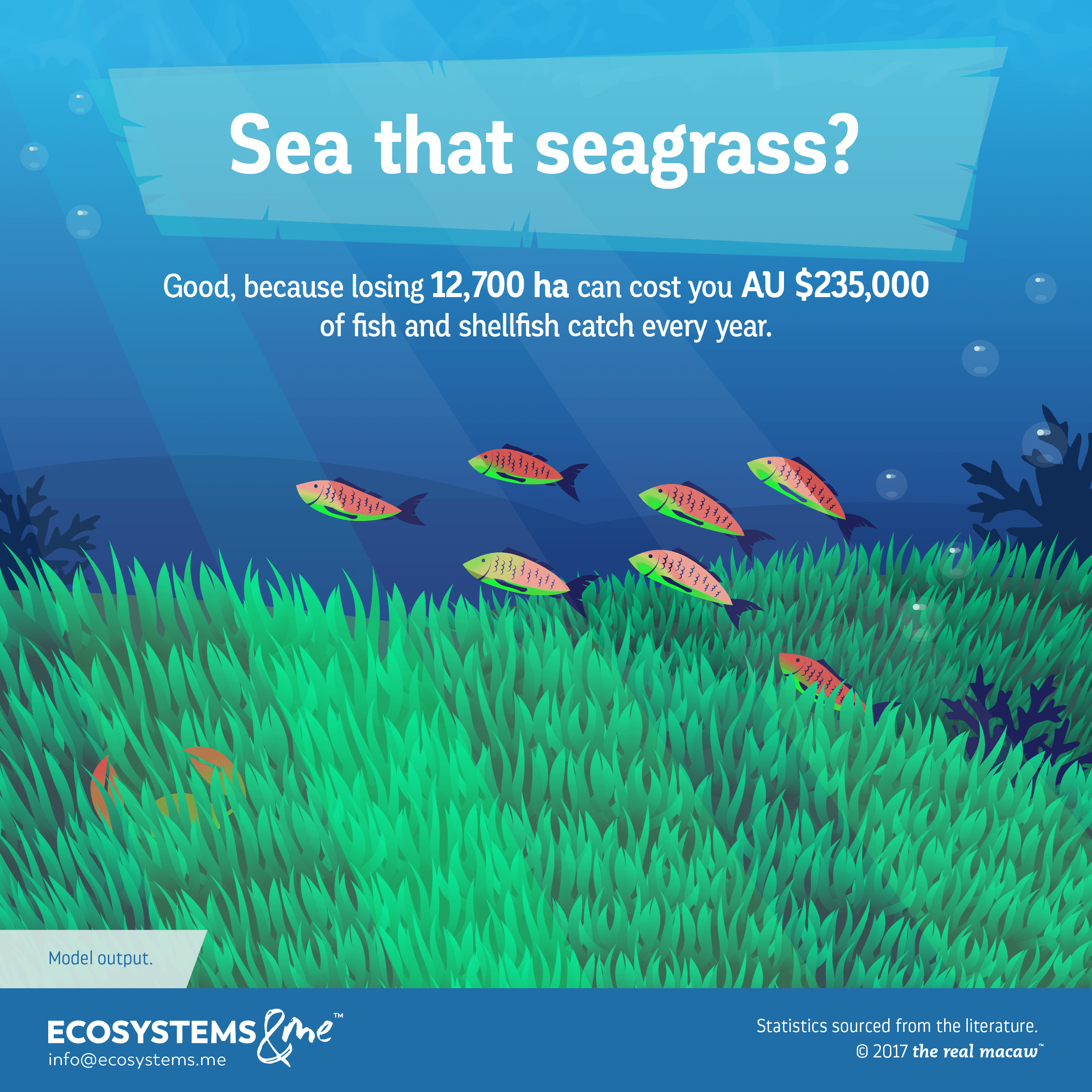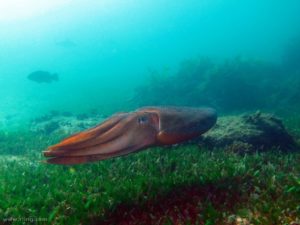
Sssssssea the sssssssseagrass. No, we’re not Slytherins; it’s just that seagrass is much more interesting than regular grass. Among many other things, it’s habitat for all sorts of fish and shellfish. Which means that in South Australia, fish, shrimp, and crab fisheries lose a lot of money without it.
Seagrass and fish
Seagrass is a grass that grows on the ocean floor, and as you might guess, it’s related to regular grass. For a detailed look at what else it does, check out the ecosystem services page. But in a nutshell, it does in the water what trees or plants do on land: clean the water, produce oxygen, reduce erosion, and stabilize the seafloor. Most importantly for South Australia’s fishermen, it provides nursery habitat – a home for young fish and shellfish. That’s because it often grows over large areas, turning the ocean floor into a ‘seagrass meadow’ and its leaves into an underwater canopy.
 Here’s a photo of an Australian Giant Cuttlefish crossing a seagrass meadow. We’re not quite sure which end is the front. Credit: Smithsonian Oceans
Here’s a photo of an Australian Giant Cuttlefish crossing a seagrass meadow. We’re not quite sure which end is the front. Credit: Smithsonian Oceans
Some fish hide in the leaves to escape from predators, others feed on it, and species like clams and crabs that live at the bottom of the ocean hide not just from predators, but from strong currents. It’s so good at providing habitat that fishermen actively target it.
How seagrass supports South Australia’s fisheries
South Australia has a lot of seagrass, especially in areas close to land. This means that many fish and shellfish depend on it for nursery habitat, including quite a few commercial species like southern calamari, blue swimmer crab, whiting, and others. Not all of them rely on it equally, of course, but they all rely on it enough for it to make a difference.
Fish, shrimp, and crab fisheries lose a lot of money without seagrass.
Historical data can link fish catch with seagrass area through a model. And although physically removing seagrass to test the effect on fisheries would not be a good idea, there have been times when it has died. Using one of these occasions, the model can output how much catch decreases every year, on average, due to the lost seagrass. Specifically, losing 12,700 hectares cost the fisheries AU $235,000 a year, based on typical market prices. And that’s why we say if you don’t see seagrass, you won’t see fish.
